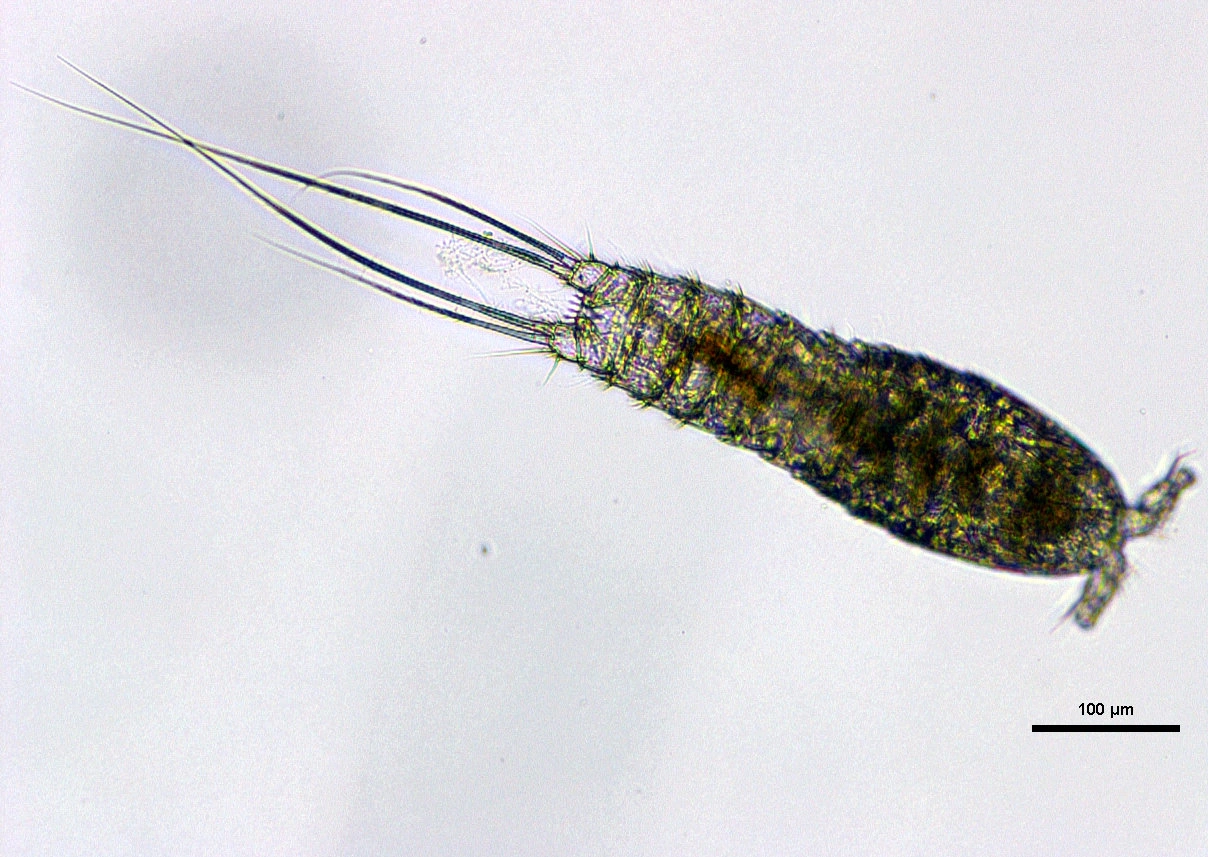Bryocamptus pygmaeus
Bryocamptus pygmaeus is a common, characteristic species, and except for the Svalbard archipelago, it is found in all parts of Norway, being most common in lakes.
Key characteristics
Bryocamptus pygmaeus has a body with a cylindrical appearance. The exopod in the first four legs has three segments, while the endopod is 2-segmented. In the first leg, the endopod has the same length as the exopod, but for the legs 2–4, the endopod is shorter than the exopod. Its rostrum is narrow. The operculum has a number (7–16) of large spines. The male has less spines (2–4) but they are larger in size. The caudal ramus is about as long as wide, having very long inner (4/5 of the body) and outer (1/2 of the inner seta) terminal setae. The antennule consists of eight segments.
Female: Length 0.40–0.70 mm
Male: Length 0.38–0.50 mm
Ecology and distribution
Bryocamptus pygmaeus is a common, eurytopic species with a broad ecological amplitude, which is found in various types of habitats; lakes both in the littoral and profundal zone, ponds, streams, mosses, swamps, litter, leaf axils, interstitial waters, groundwater, tree holes, terrestrial soil habitats like grasslands and deciduous forest, man-made habitats like city water pipes, coal mines, ship ballast water and also in brackish waters.



